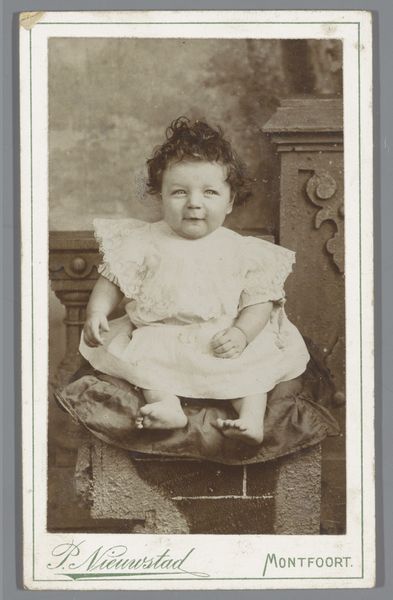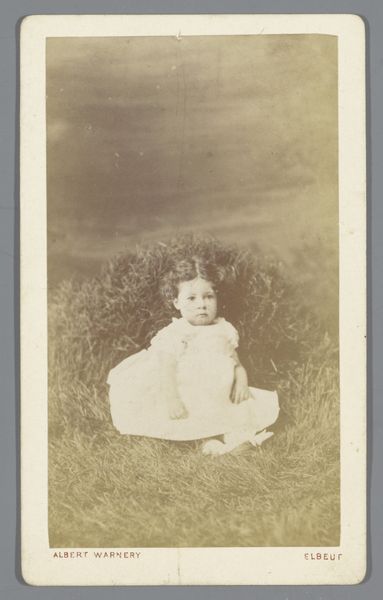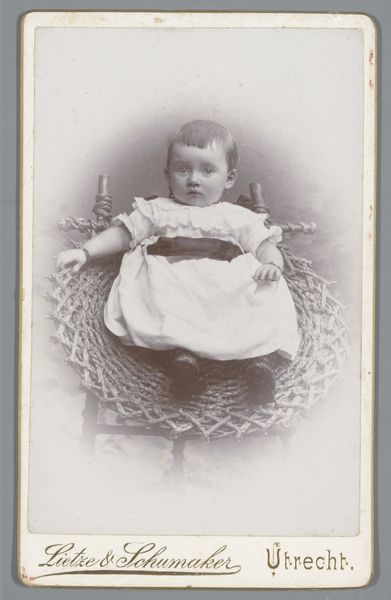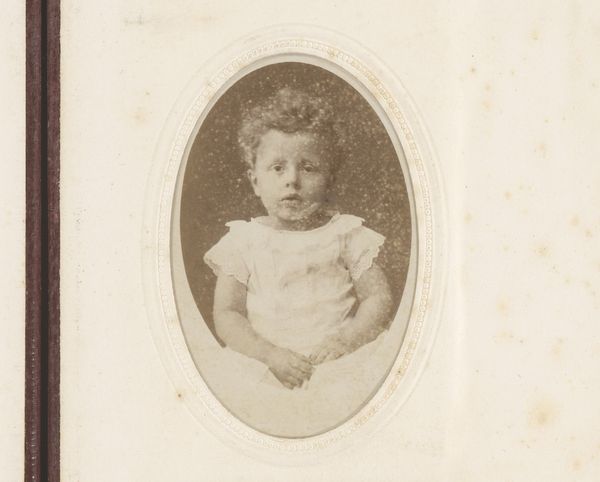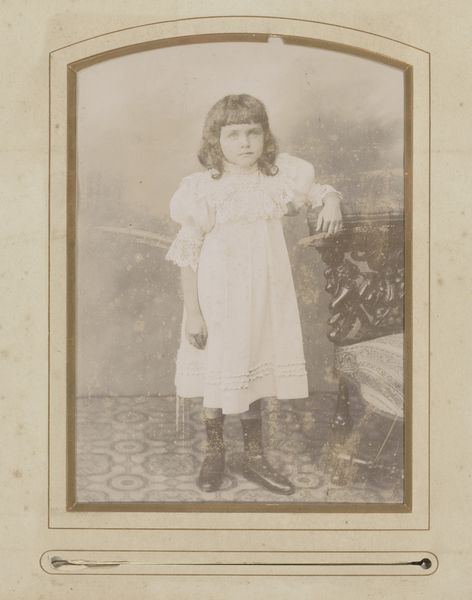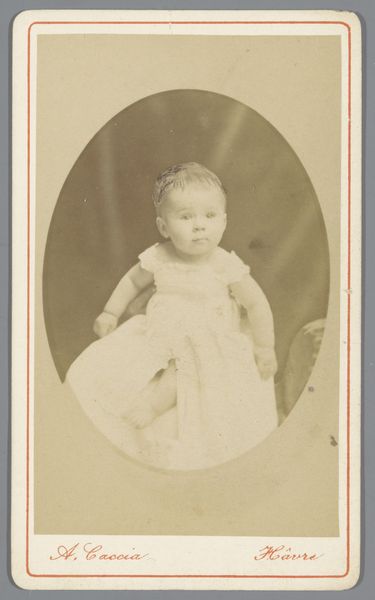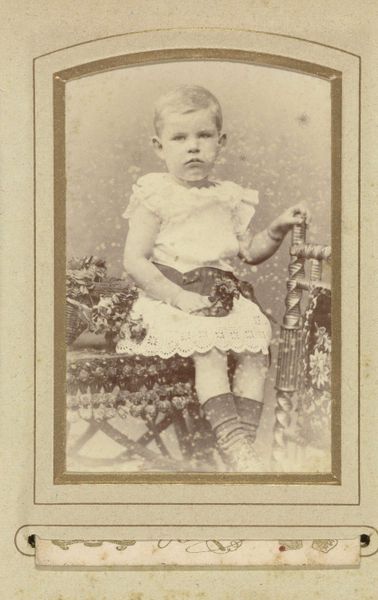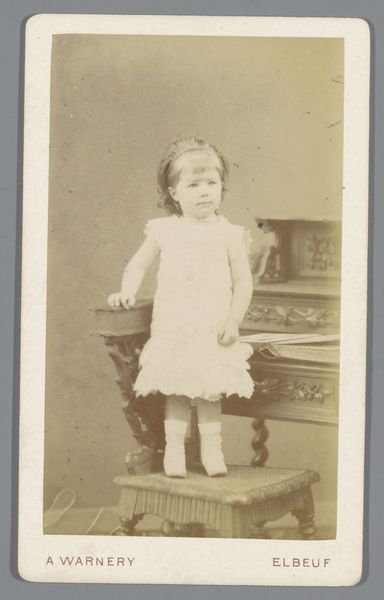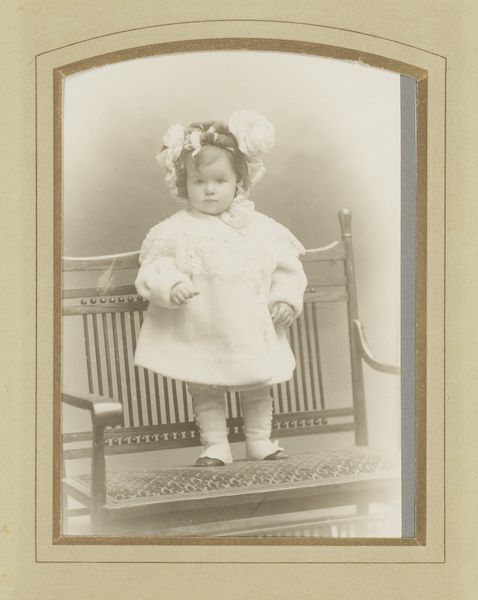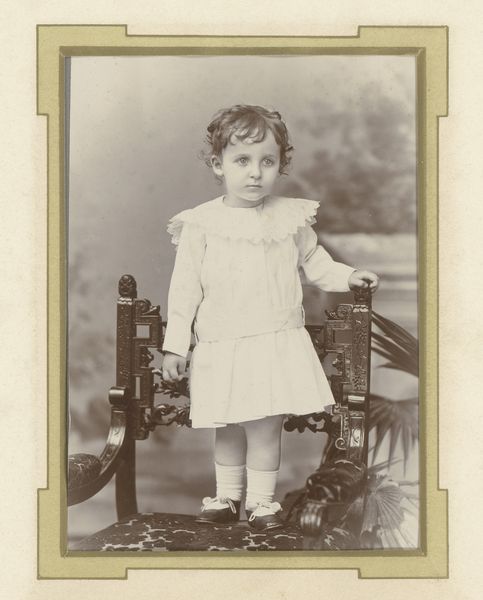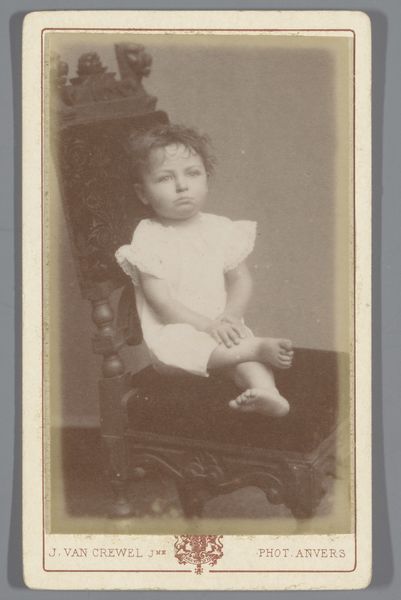
photography
#
portrait
#
photography
#
genre-painting
Dimensions: height 133 mm, width 93 mm
Copyright: Rijks Museum: Open Domain
Editor: So, this is "Portrait of a Girl in White Dress, Standing Behind a Fence," taken between 1880 and 1900 by B.J. Pottjewijd. It’s a photograph, of course, and what strikes me is the very staged nature of it. The wooden fence looks almost theatrical. How do you see it? Curator: The material elements here are key. Look at the photographic process itself, a relatively new technology at the time. Consider the labor involved in setting up this shot - the sourcing and arrangement of the “fence,” the girl’s clothing, the backdrop, and the costuming implications inherent in its production. These all speak to the aspirations and societal constraints of the period. Editor: That's a good point about the 'newness' of photography. I hadn't considered the status implications of simply commissioning a photo. Curator: Exactly. This wasn't a candid shot. Every element was carefully constructed, likely signifying the family's social standing, even the 'rustic' fence reads as contrived within this highly curated representation. Think about the photographer’s role, too, within this whole socio-economic transaction. Who was he? How did he approach his labor? Was he considered 'artisan', or did he have other pretensions? Editor: So you're less focused on the girl herself, and more on the materials and how they were manipulated to create this image? Curator: Precisely. We have to recognize how production, consumption, and material culture intersect within the making of this portrait. What is ‘art’ in this context, and how is value constructed around these images and photographic labour itself? Editor: I see. It’s fascinating to think about all the layers of material decisions embedded in something that looks, on the surface, like a simple portrait. Curator: It moves us to question traditional hierarchies in art history. And I’m glad it changed your mind. Editor: Definitely gave me new angles. Thanks!
Comments
No comments
Be the first to comment and join the conversation on the ultimate creative platform.

